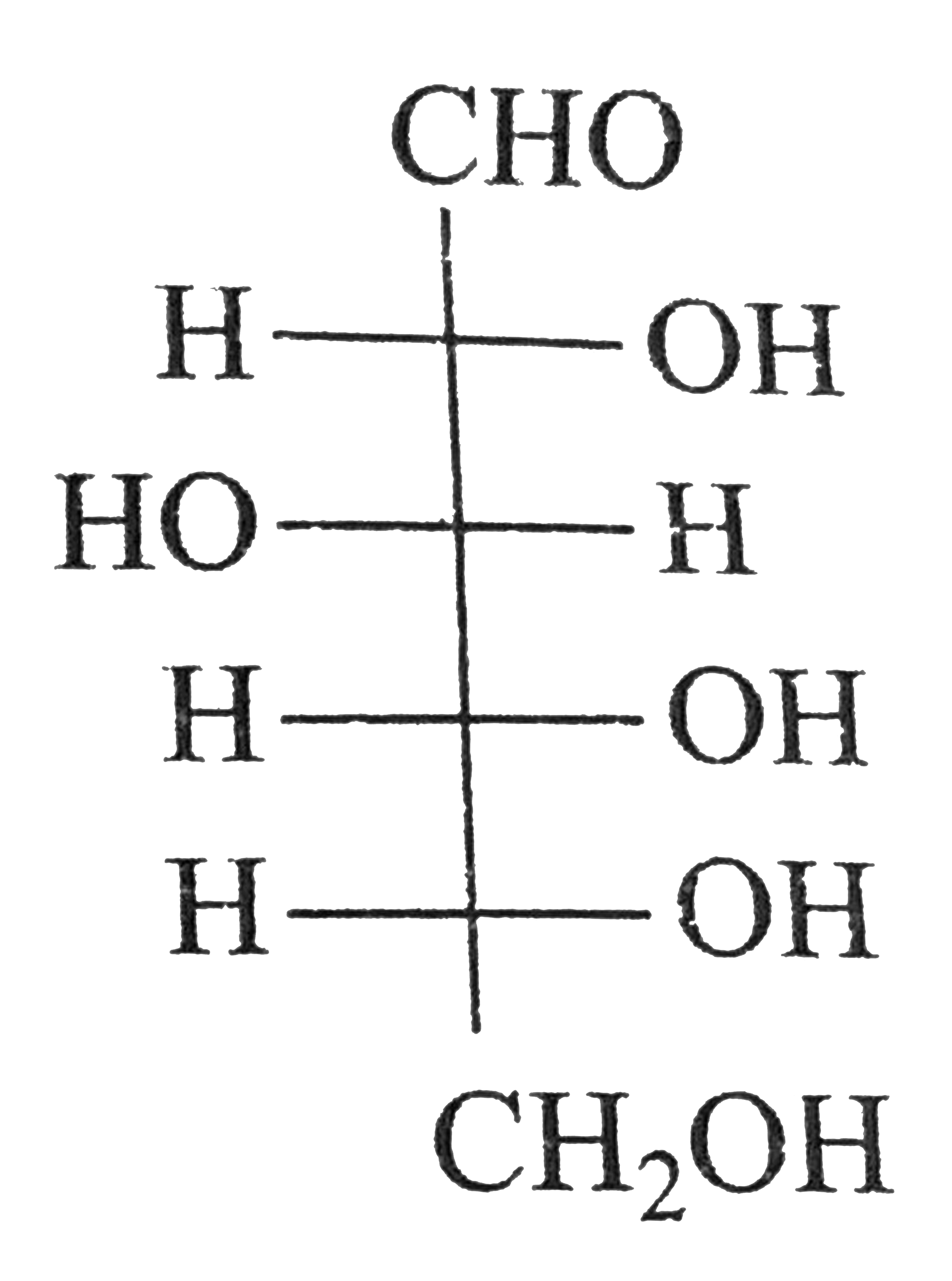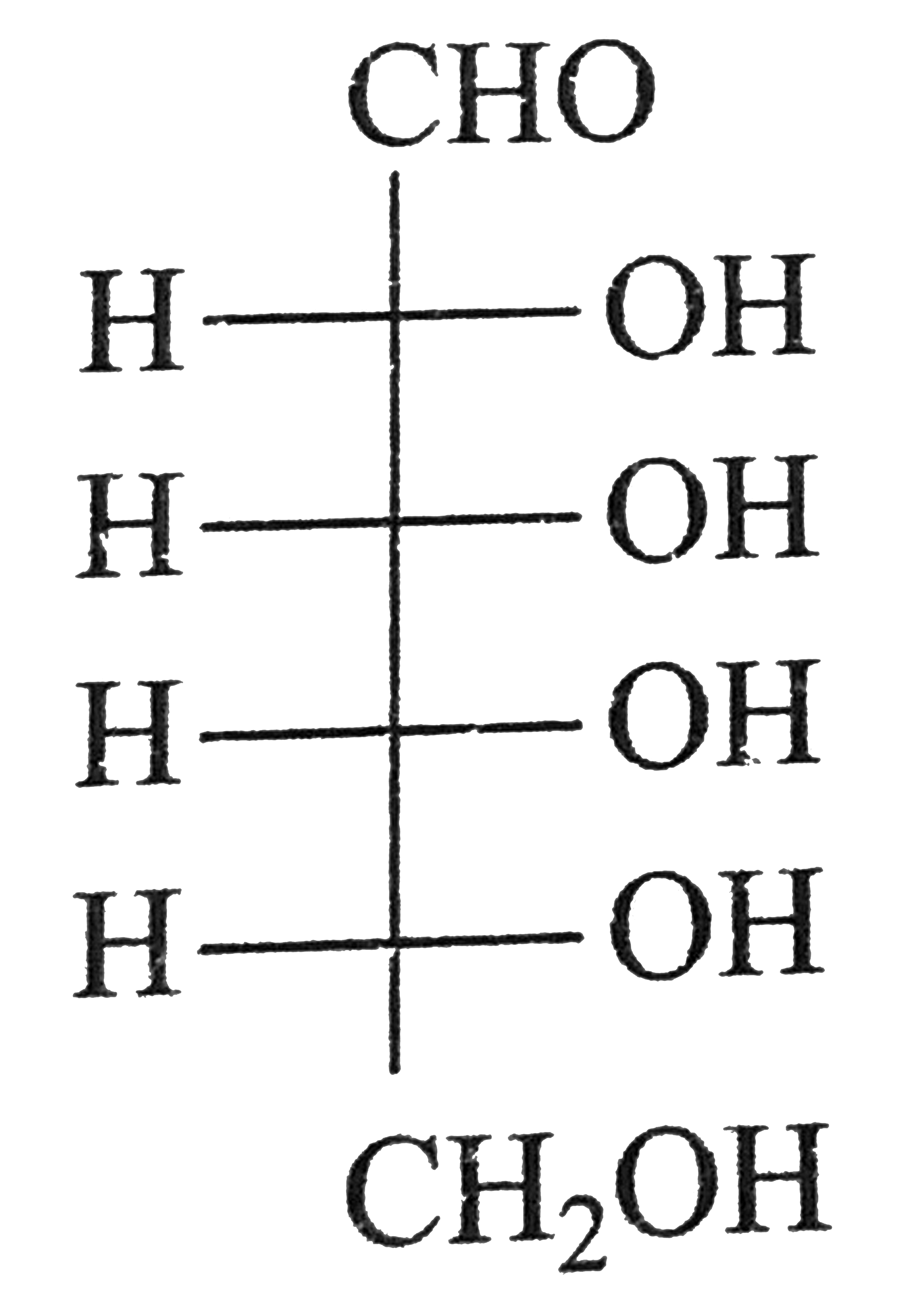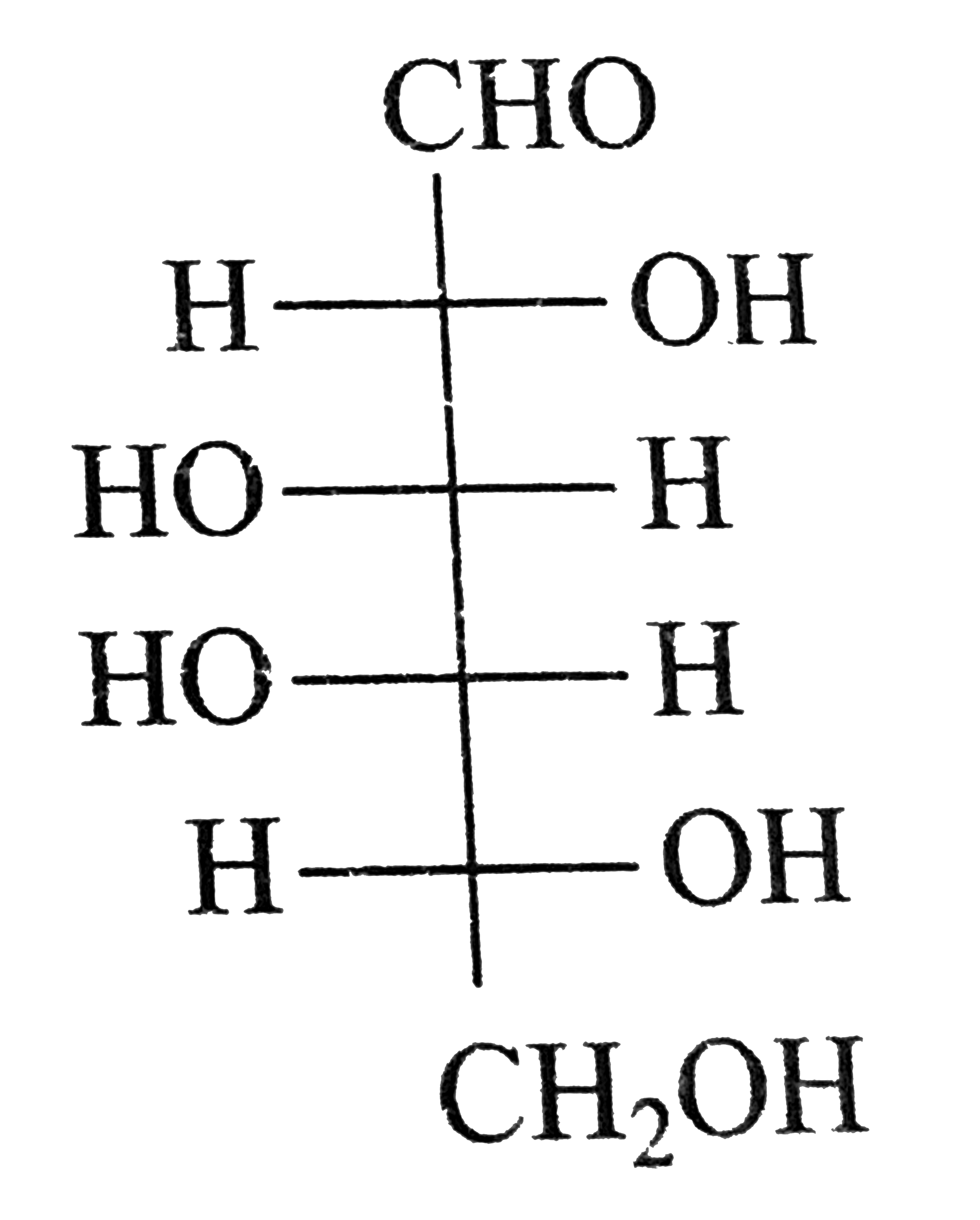Write chemical reaction to show that open structure of D-glucose contains the following:
(i) Straight chain
(ii) Five alcohol groups
(iii) Alsehyde as carbonyl group
To demonstrate the open structure of D-glucose and show that it contains a straight chain, five alcohol groups, and an aldehyde as a carbonyl group, we can outline the following steps:
Step 1: Representing the Straight Chain
The open-chain structure of D-glucose can be represented as follows:
D-glucose: CHO−CHOH−CHOH−CHOH−CHOH−CH2OH
To demonstrate the presence of a straight chain, we can perform a reaction that confirms the straight-chain structure. We can react D-glucose with HI (hydroiodic acid) under prolonged heating:
D-glucoseHI,heat−−−−−→CH3−(CH2)4−CHO
This reaction yields n-hexane, confirming the presence of a straight-chain structure.
Step 2: Demonstrating Five Alcohol Groups
To show that D-glucose contains five alcohol groups, we can react it with acetic anhydride. The reaction will replace the hydrogen atoms of the hydroxyl (-OH) groups with acyl groups, allowing us to count the number of alcohol groups:
D-glucose+Acetic anhydride→Acylated D-glucose
The structure of acylated D-glucose will show that five -OH groups have been replaced, confirming the presence of five alcohol groups.
Step 3: Showing the Aldehyde as a Carbonyl Group
To demonstrate that D-glucose contains an aldehyde group (which is a carbonyl group), we can react it with bromine in water (Br2/H2O). This reaction will oxidize the aldehyde group to a carboxylic acid:
D-glucose+Br2/H2O→Gluconic acid
This reaction confirms the presence of the aldehyde group in D-glucose, as it is oxidized to form gluconic acid.
Summary of Reactions
1. Straight Chain Confirmation:
D-glucoseHI,heat−−−−−→CH3−(CH2)4−CHO
2. Five Alcohol Groups Confirmation:
D-glucose+Acetic anhydride→Acylated D-glucose
3. Aldehyde Group Confirmation:
D-glucose+Br2/H2O→Gluconic acid
The open-chain structure of D-glucose can be represented as follows:
To show that D-glucose contains five alcohol groups, we can react it with acetic anhydride. The reaction will replace the hydrogen atoms of the hydroxyl (-OH) groups with acyl groups, allowing us to count the number of alcohol groups:
To demonstrate that D-glucose contains an aldehyde group (which is a carbonyl group), we can react it with bromine in water (Br2/H2O). This reaction will oxidize the aldehyde group to a carboxylic acid:
1. Straight Chain Confirmation:
D-glucoseHI,heat−−−−−→CH3−(CH2)4−CHO
D-glucose+Acetic anhydride→Acylated D-glucose
D-glucose+Br2/H2O→Gluconic acid
Topper's Solved these Questions
- XII BOARDSBOOK - XII BOARDS PREVIOUS YEARCHAPTER - XII BOARDSEXERCISE - SECTION-D
12 Videos
- XII BOARDSBOOK - XII BOARDS PREVIOUS YEARCHAPTER - XII BOARDSEXERCISE - CHEMISTRY (Theory) [SET - I]
34 Videos
- XII BOARDSBOOK - XII BOARDS PREVIOUS YEARCHAPTER - XII BOARDSEXERCISE - SECTION-B
22 Videos
- SAMPLE PAPER 2019BOOK - XII BOARDS PREVIOUS YEARCHAPTER - SAMPLE PAPER 2019EXERCISE - SECTION: D
1 Videos
Similar Questions
Knowledge Check
Which of the following is the open-chain structure of D-glucose?
A B
B C
C D
D
Open structure of glucose contains ___________ secondary alcoholic groups
AfourBfiveCtwoDthree
Glucose contains in addition to aldehyde groups :
View SolutionWrite the structures of the following :
(i) Acetone (ii) Ethylene glycol
(iii) Sec-butyl alcohol.
View SolutionWrite the reactions showing the presence of following in the open structure of glucose :
(i) A carbonyl group (ii) Straight chain with six carbon atoms
View SolutionWrite a reaction which shows that all the carbon atoms in glucose are in a straight chain.
View SolutionWrite one chemical reaction each to illustrate the following :
(i) Hoffmann Bromamide reaction.
(ii) Gabriel phthalimide reaction.
View SolutionGive reasons for the following :
(i) Carboxylic acids do not give characteristic reactions of carbonyl group.
View Solution
